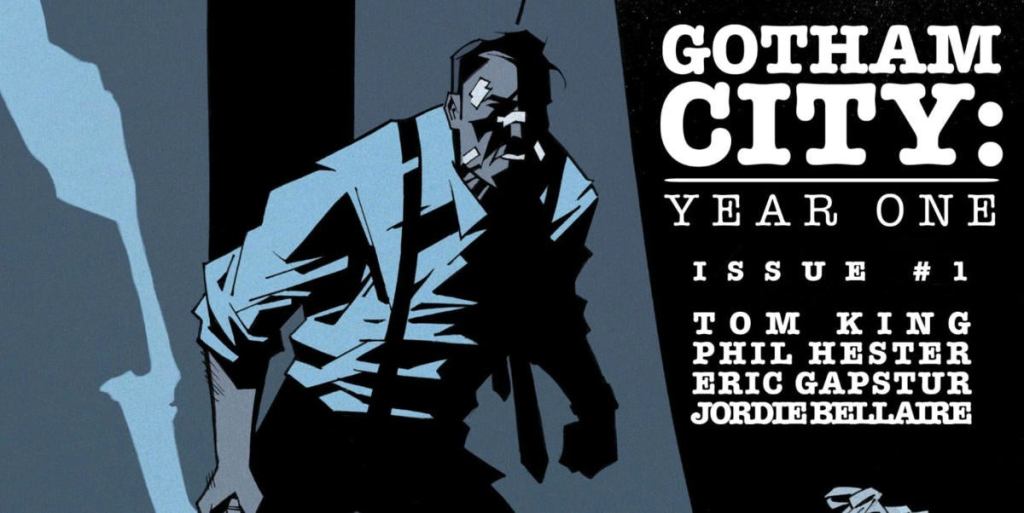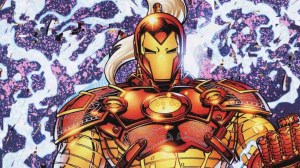Gotham City: Year One sets out to tell the origin story of Gotham City by delving into its past in a noir tale focused upon private detective Sam “Slam” Bradley as he’s pulled into the kidnapping of Helena Wayne—would be sister to Thomas Wayne—in the early 1960s. The first issue is all about staging as it sets up the many faces, settings, and intrigues woven into this detective story, and it presents a clear genre approach pulling freely from the plots and style of Hollywood classics like The Maltese Falcon. Readers will quickly know whether this tale fits their taste, but those who appreciate noir tales in comic books are bound to return for issue #2.
Videos by ComicBook.com
Slam Bradley has appeared throughout DC Comics’ history—created by the three men most responsible for Superman’s debut: Jerry Siegel, Joe Shuster, and Malcolm Wheeler-Nicholson—but he steps onto the page as a tabula rasa for writer Tom King and artist Phil Hester to cast their familiar detective type upon. Slam resembles and speaks with a cadence familiar to fans of Hammett, Chandler, and even Ellroy. This makes getting to the heart of the conspiracy at hand much easier as the narrative makes quick use of its genre tropes to speed things along. It makes the last page twist easy to predict, but that doesn’t make it any less compelling either.
Slam moves across the many facets of Gotham City – moving from his downtown office and working class folks all the way to fabulous Wayne Manor. He makes for an excellent guide and in his narration suggests that 1961 was the year where things went wrong for the city. It’s a bold claim and his narration suggests that there may be some truth to it. Throughout the issue there are observations of familiar social tensions and the sort of problems that might doom a city. Yet these brief observations of class and race remain simple observations and it’s unclear whether the series will be able to offer any insightful remarks or critique in such a brief format. The focus in issue #1 is upon the plot and King makes quick work of laying out the foundations for a thrilling detective story, if nothing else.

The clear hook in Gotham City: Year One is the outstanding, genre-inspired-reimagining of one of popular culture’s most iconic metropolises by artist Phil Hester, inker Eric Gapstur, and colorist Jordie Bellaire. Given that this story is focused on subject matter more closely linked to early seasons of Mad Men than Batman comics, Hester invests a great deal of attention into establishing place and mood. Outfits, offices, and skylines all serve to tell a story and draw the reader into reading a period piece – so much so that when small nods are made to the superhero genre they often feel out of place. Their figures read like central casting for a film that Humphrey Bogart may have considered.
It’s clear there is a deep appreciation for what sort of story this comic aims to be, but that doesn’t limit its ambitions. Hester’s layouts make Gotham City: Year One read as compulsively as great superhero comics. Figures are often used to frame pages with panels dancing about them and providing a sense of action and power even in dialogue-driven sequences. Action makes great use of black and white contrasts and clearly framed moments of violence. Hester expresses clear restraint and allows a corpse or punch to speak for itself without exaggeration.
Bellaire’s colors play brilliantly against Hester’s solid and angular forms with flat designs playing up elements of contrast. Each setting possesses a unique color palette that makes Slam’s transitions across the city, as well as flashbacks, easy to recognize. Given the black-and-white inspirations and essential evocation of mood in this tale, Bellaire ensures its success.
Gotham City: Year One #1 is an obvious success – bringing classic noir style to the city before Batman. For as much as fans discuss Batman as a detective, it’s rare to find a genuine detective story connected to the character, but this is clearly one that appreciates its genre and possesses plenty of ambition in both its plot and subject matter. While the former is well established here, it’s the latter that will keep readers wondering exactly what sort of comic book they’re reading: a stylish and entertaining detective story or one that transcends its foundations to impart something more significant. As a reader, there are no bad options.
Published by DC Comics
On October 4, 2022
Written by Tom King
Art by Phil Hester and Eric Gapstur
Colors by Jordie Bellaire
Letters by Clayton Cowles
Cover by
Phil Hester, Eric Gapstur, and Jordie Bellaire








